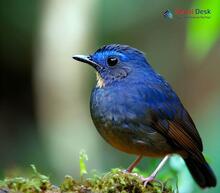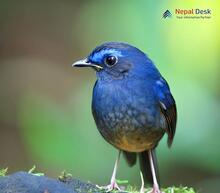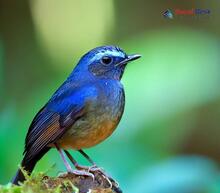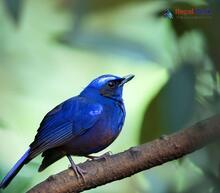The Niltava genus, part of the Muscicapidae family, consists of several enigmatic bird species known for their striking plumage and captivating songs. As a group shrouded in mystery, numerous aspects related to their evolution, taxonomy, morphology, and ecology continue to stir curiosity among researchers and nature enthusiasts alike. This article delves into these fascinating birds and sheds light on their existence in Nepal.
Evolutionary Insights into the Niltava Genus
Understanding the evolutionary history of Niltavas helps to paint a clearer picture of their relationships with other bird species. Scientists rely on morphological and genetic data to piece together their lineage and divergences. Recent studies have indicated that the Niltava genus belongs to the Old World flycatcher family and shares close ties with flycatchers from Africa and Asia as well as European robins.
Taxonomy: Classifying Colorful Species
There are currently five recognized species within the Niltava genus:
1. Niltava sundara (Fujian Niltava)
2. Niltava grandis (Large Niltava)
3. Niltava macgrigoriae (Small Niltava)
4. Niltavaxanthomitra (Orange-flanked Bush Robin)
5. Niltava vivida (Vivid Niltava)
While these classifications are widely accepted, it's essential to note that taxonomies might change as further research unveils new information on genetic relationships among these birds.
Morphological Marvels: What Sets Them Apart
Niltavas are small to medium-sized birds characterized by their strikingly vibrant plumage combinations. Males generally display more vivid hues than females, who often possess duller brown or grey feathers. Their bills are typically short and stout while their wings and tails exhibit moderate to long lengths—adaptations that allow them to navigate with ease through their preferred habitats.
Ecology and Behaviors: Thriving in a Diverse World
The Niltava genus species are primarily inhabitants of the montane forests, often found in elevations of 1,000-3,000 meters. These birds prefer dense undergrowth and well-shaded areas for nesting and foraging. Their diet consists mainly of insects and small fruits. The breeding season typically occurs between April and August, during which these birds exhibit complex vocalizations.
Existence of Niltavas in Nepal: A Bird Watcher's Paradise
Nepal is home to several Niltava species, including the Large Niltava (Niltava grandis) and the Small Niltava (Niltava macgrigoriae). Found predominantly in the eastern and central parts of the country, they frequently inhabit mid-elevation coniferous forests. Bird lovers in Nepal can treat themselves to a remarkable experience by venturing into these lush forests to catch a glimpse of these captivating creatures.
In conclusion, the Niltava genus provides a fascinating glimpse into the diversity of life that thrives within our planet's rich ecosystems. As researchers continue to unpack their evolutionary pasts and ecological roles, we gain further appreciation for these spectacular birds and the environments they inhabit. For bird enthusiasts and casual observers alike, Nepal offers an exceptional opportunity to immerse oneself in the world of these remarkable avian wonders.




